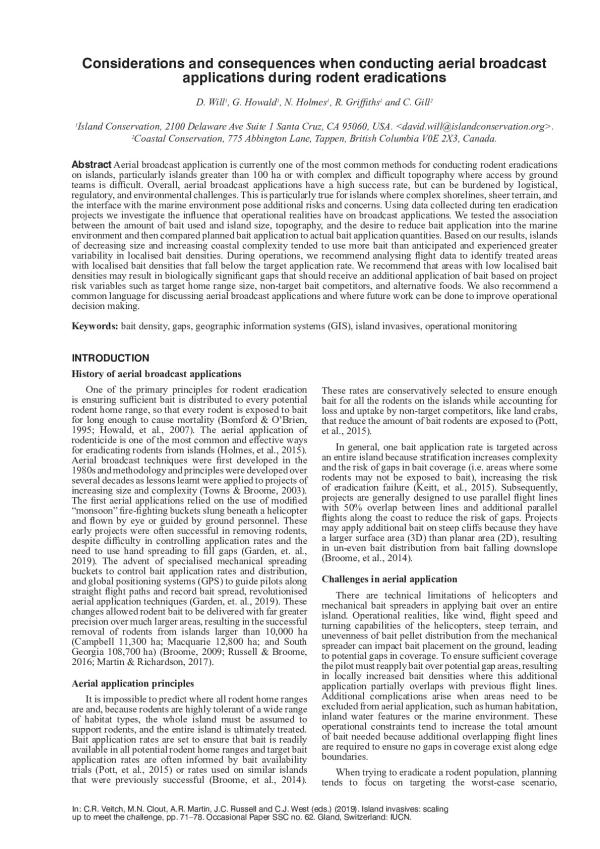Location
SPREP LIBRARY
Publisher
International Union for Nature Conservation (IUCN)
Publication Year:
2019
Publication Place
Gland, Switzerland
Call Number
[EL]
Collection
Material Type
Language
English
Record ID:
42413
Legacy PEIN ID:
82526
General Notes
Available online
Available online
Subject Heading(s)
Invasive species
Abstract
Aerial broadcast application is currently one of the most common methods for conducting rodent eradications on islands, particularly islands greater than 100 ha or with complex and difficult topography where access by ground teams is difficult. Overall, aerial broadcast applications have a high success rate, but can be burdened by logistical, regulatory, and environmental challenges. This is particularly true for islands where complex shorelines, sheer terrain, and the interface with the marine environment pose additional risks and concerns. Using data collected during ten eradication projects we investigate the influence that operational realities have on broadcast applications. We tested the association between the amount of bait used and island size, topography, and the desire to reduce bait application into the marine environment and then compared planned bait application to actual bait application quantities. Based on our results, islands of decreasing size and increasing coastal complexity tended to use more bait than anticipated and experienced greater variability in localised bait densities. During operations, we recommend analysing flight data to identify treated areas with localised bait densities that fall below the target application rate. We recommend that areas with low localised bait densities may result in biologically significant gaps that should receive an additional application of bait based on project risk variables such as target home range size, non-target bait competitors, and alternative foods. We also recommend a common language for discussing aerial broadcast applications and where future work can be done to improve operational decision making.
Location
SPREP LIBRARY
Publisher
International Union for Nature Conservation (IUCN)
Publication Year:
2019
Publication Place
Gland, Switzerland
Call Number
[EL]
Collection
Material Type
Language
English
Record ID:
42413
Legacy PEIN ID:
82526
General Notes
Available online
Record Created: 31-May-2019
Record Modified: 09-Dec-2021

